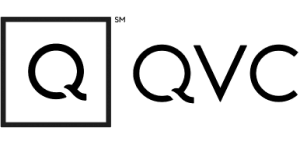This post contains affiliate links. Please see our disclosure policy.
So you have tennis elbow—but you don’t play tennis. What? Tennis elbow is a common name for the condition known as lateral epicondylitis. It’s a fairly prevalent issue among active adults. So what is it and how can you treat it? Read on to find out.
What Is Tennis Elbow?
According to the Mayo Clinic, tennis elbow is an overuse and muscle strain injury caused by repetitive motions of the wrist and arm.
Midway between your elbow and your wrist there is a tendon in the forearm called extensor carpi radialis brevis. In layman’s terms, this tendon simply allows your wrist to extend.
Through degeneration, overuse, or improper form, tennis elbow can occur in this area and, over time, become painful in the elbow, forearm, or wrist. Obviously, tennis elbow can affect those who perform repetitive movements with their elbow joint such as tennis or other racquet sports.
However, it is more common to occur in those people who perform repetitive movements with their wrist whether in the workplace or the “workout place” doing moves such as push-ups, pull-ups or weight lifting.
What Are Some Risk Factors For Tennis Elbow?
While anyone can get tennis elbow, these risk factors make it more likely to occur:
- Age: People of any age can have tennis elbow, but is most commonly diagnosed in people between the ages of 30-50.
- Repetitive Sports: People who participate in activities that use repetitive motions such as tennis, other racquet sports or weight lifting are more likely to have tennis elbow. You can also get elbow pain from workout classes that involve lots of repetitive arm motions like a yoga sculpt or boxing class.
- Work-Related Motion. People who work in jobs that use repetitive motions of their wrist or arm such as carpenters, chefs, painters, or landscapers are more prone to this condition. You can even get tennis elbow from excessive typing; they sometimes call it “Computer Elbow!”
- Improper Form. Sometimes tennis elbow comes from using improper form during whatever motion you are using whether in sport or at work. Even if you take the time to heal, this condition will return if you don’t fix the form. Make sure to check with a professional.
Related: 7 Workout Mistakes That Can Leave You In Pain
What Are The Symptoms of Tennis Elbow?
If you suspect you have tennis elbow, here are some symptoms commonly associated with the condition. Keep in mind you may have one or more:
- Pain at the elbow joint
- Pain in the forearm or wrist
- Possible swelling
- Decreased grip strength
- Discomfort or pain when performing activities such as weight lifting, push-ups, or other repetitive movements
How Can I Treat Tennis Elbow?
Like most injuries or conditions, the best treatment is the most conservative! If this condition is new to you, take a break from the activity that is causing the problem. Although it can be hard to take a timeout from your favorite sport or workout, it will give your arm a chance to heal naturally, which is the most effective way to get better. Other treatments include:
- Rehabilitation exercises. Here are some exercises that can help you strengthen the muscles in the forearm and increase arm flexibility and range of motion, both important things for rehabilitating your condition.
- Ice. There is a difference in how chronic and acute pain should be treated. Since most cases of tennis elbow are acute, meaning they last six weeks or less, you should use cold therapy, most commonly ice, to treat your pain.
- Anti-inflammatory meds or herbs. NSAIDs (nonsteroidal anti-inflammatory drugs) like Advil, Aleve, or Aspirin can be effective in treating pain because they reduce chemical signals that are related to pain and inflammation. You can also try incorporating anti-inflammatory herbs like turmeric to your diet to decrease overall inflammation and lessen your pain.
- Try a brace. Wearing an elbow brace can reduce the impact regular activities have on injured tissues. To maximize comfort and mobility, try a flexible brace or a compression sleeve that provides light support.
- Rest. If you suspect your tennis elbow is from repetitive movements at work, talk to your boss about working around the activity that’s causing it. For example, if it’s from typing excessively, see if you can communicate more of your work verbally in a presentation instead of over typed documents. If you know that your elbow pain is from a specific workout, take a break from those workouts for a few weeks and see if the pain lessens.
If these treatments do not alleviate your pain, or if your condition has been persisting for quite some time, a doctor may suggest other options such as steroid injections, acupuncture, physical therapy or, in extreme cases, possibly even surgery. Be sure to explore all our options and, if necessary, get a second opinion.
Want to save this info? #PinItForLater!



